Ancient Athens Part II
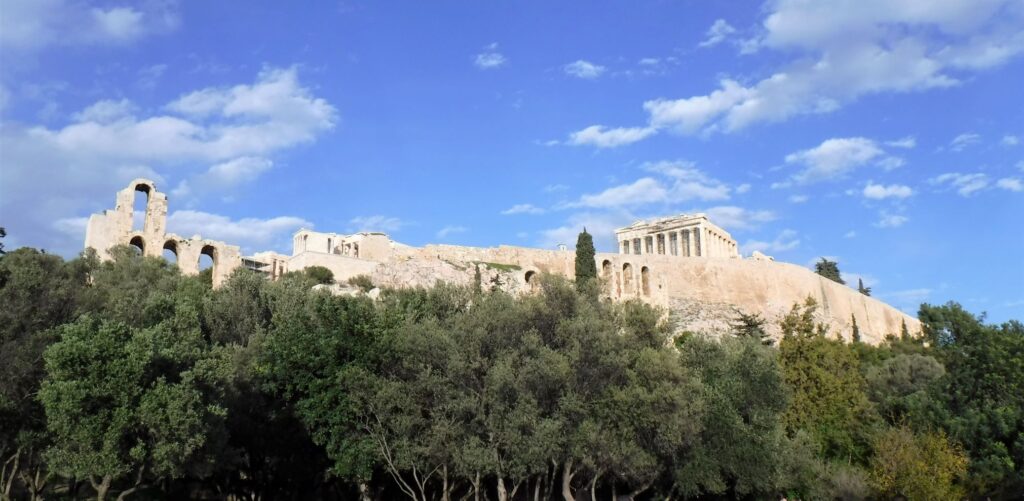
After a fascinating visit to the Acropolis Museum, it was time to check out the Acropolis itself. Rising majestically from the centre of Old Athens, the Acropolis mesa supports an extraordinary collection of ancient structures.
After entering the Acropolis precinct from the south-east gate, the first site you come across is associated with everyone’s favourite God, Dionysis. Dion was the God of Sex, Drugs and Rock ‘n’ Roll, and his cult gave rise to the grand theatre on the southern slope of the Acropolis. In its heydey, the Theatre of Dionysis could seat 17,000, and was the premier venue for all the big acts.
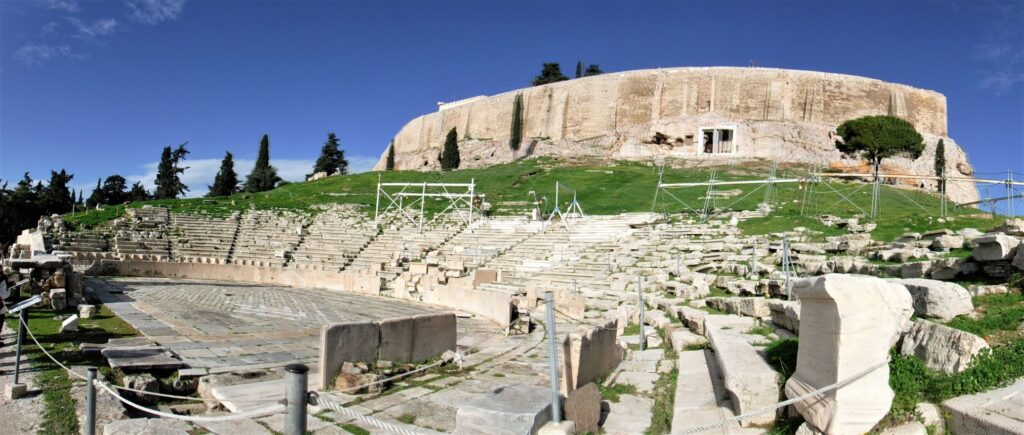
Moving further west along the southern slope of the Acropolis, you find a collection of artefacts displayed under a shade structure, including this herm.

A herm is a sacred object associated with the worship of Hermes, a God who, like most in the Greek panoply, had a broad and eclectic portfolio. Hermes was the God of Fertility, Roads, Flocks, Commerce, Thieves, Travellers, Sports, Athletes, Luck, Sleep and Language. When not tending to these Godly duties, Hermes also found the time to invent the lyre. However it is his fertility department that is front and centre in herm sculptures.
The south-western section of the Acropolis is dominated by the impressive Odeon of Herodes Atticus. Built in the second century AD, the wonderfully named Tiberius Claudius Herod Atticus stumped up the cash and consequently got naming rights. Unlike Dionysis’ open-air venue, Tib’s Odeon was originally a roofed structure, holding around 5,000 punters. Restorations in the 1950s permit the ancient venue to still host events to this day.
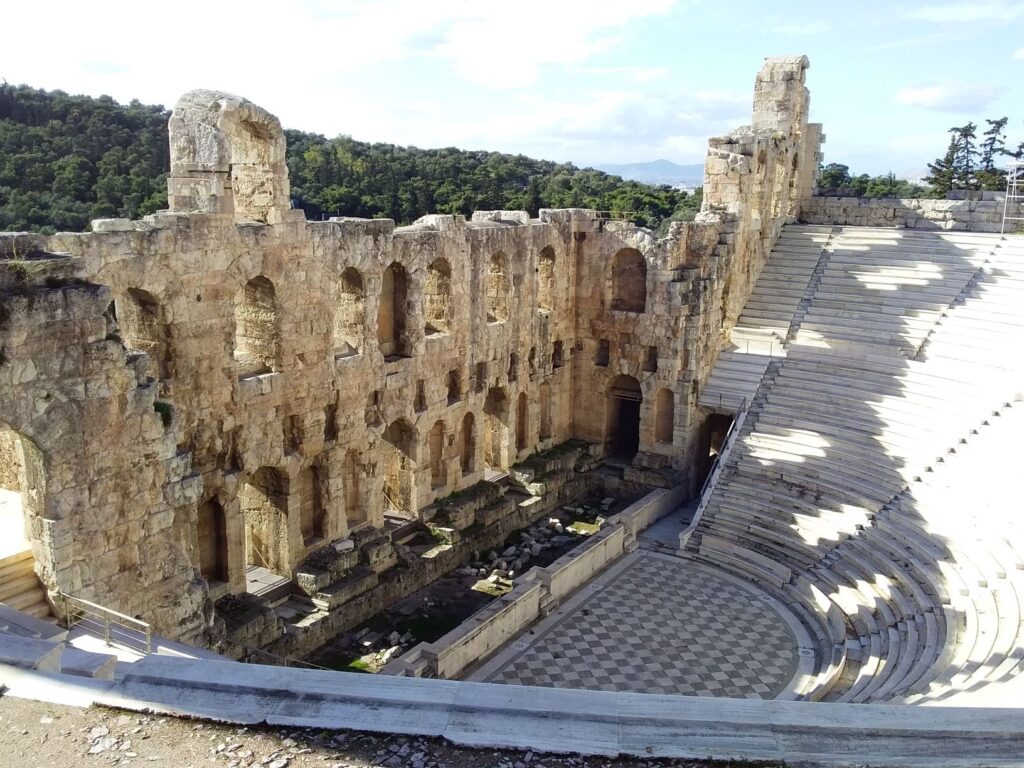

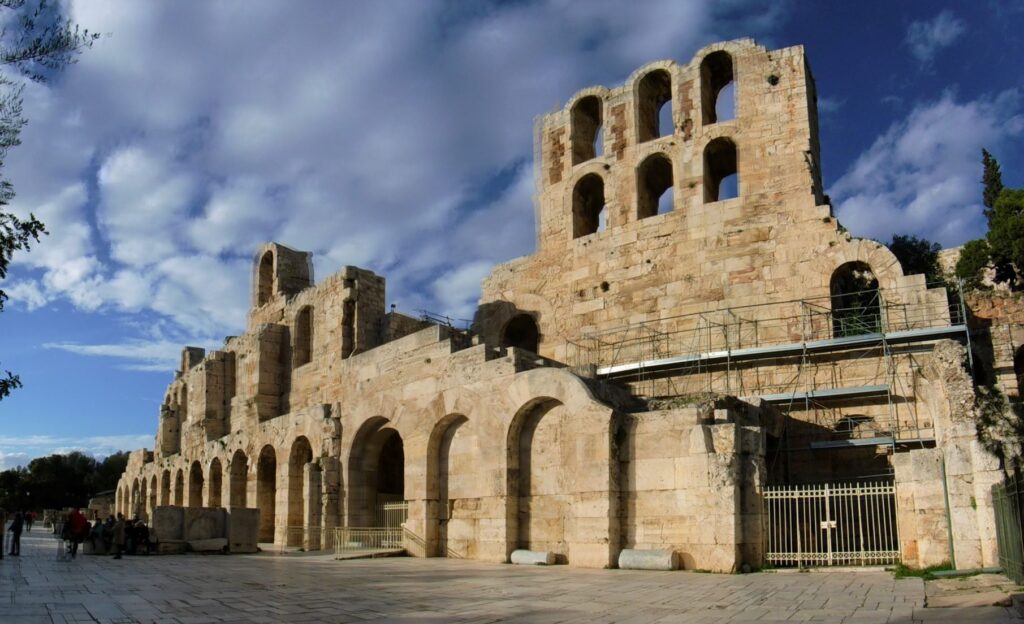
From the Odeon you climb up to the impressive Propylaia, the entrance to the Acropolis mount. As you ascend the stairs and walk through the massive columns, you get a buzz of excitement knowing you are about to enter one of the world’s most amazing ancient sites.
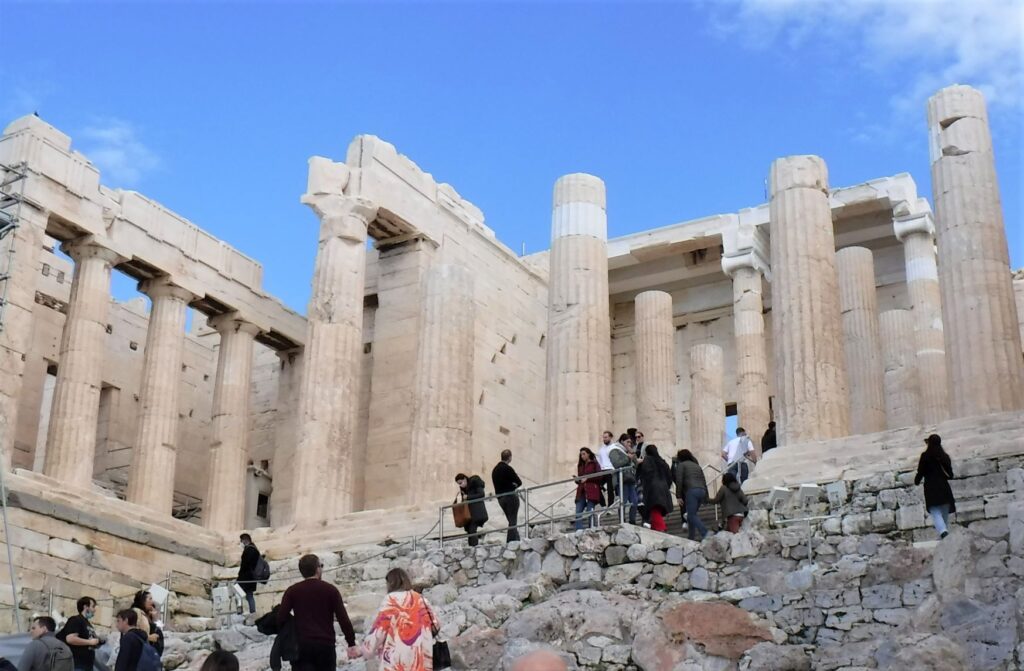
Immediately south of the Propylaia is the Temple of Athena Nike, a small but striking free-standing structure. The Acropolis Museum describes the building as: ‘Small, Ionic temple made of marble and dedicated to Athena Nike, one of goddess Athena’s aspects‘.
Now the ancients that came up with Greek Mythology clearly had a great time creating the myriad legends. (Come to think of it, I think Myriad was the Greek God of Bounty, Abundance and Capacity Crowds.) The origin of Athena is a ripper. Apparently Athena’s old man, Zeus, was suffering from a bastard of a headache. Now medicine being a little rudimentary during the age of the Gods, it was decided to split Zeus’ head open, presumably to relieve the pain. I expect everyone was a little surprised when a fully grown woman, suited in armour and ready to rumble, sprang from Zeus’ gourd. I can only imagine how uncomfortable it must have been to have a fully grown armoured woman in your head, so no-one could accuse Zeus of having man-flu. Anyway, this warrior woman was Athena, and was accepted as Zeus’ daughter despite her unusual birthing procedure.

Dwarfing all other structures atop the Acropolis is the Parthenon. Similar to other big human made things from the distant past, it’s an awesome sight. Since it’s construction, the Parthenon has had a tough time, what with earthquakes, war damage, plundering and being exposed to the elements for 2,500 years. However it is still majestic, mighty and very photogenic.
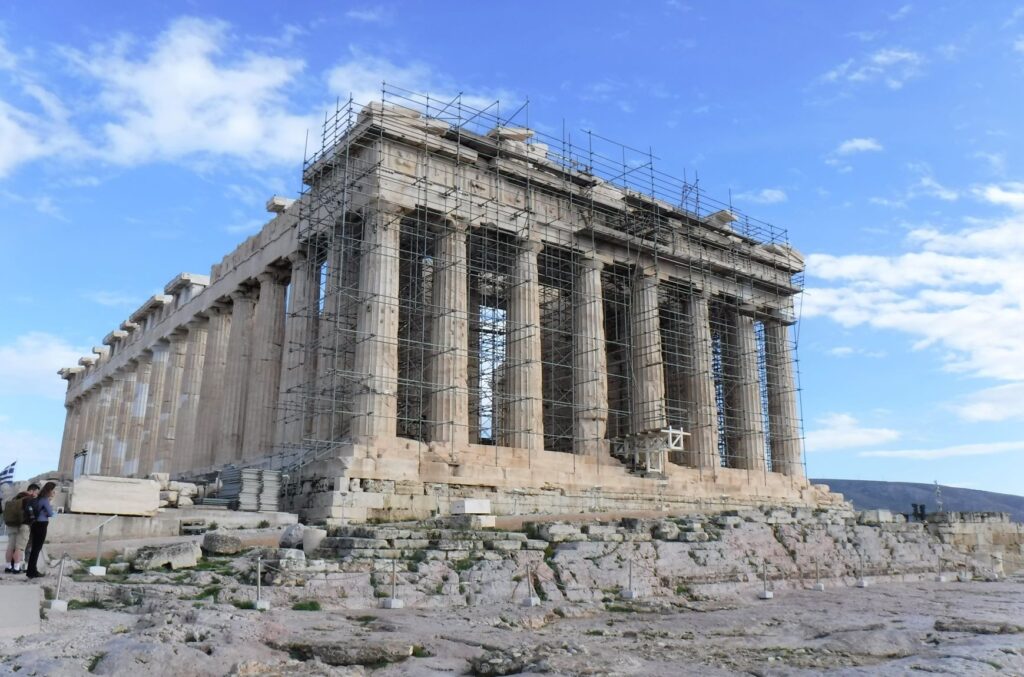
The Parthenon was built as a temple to Athena Parthenos, or the virgin Athena, and presumably that’s why it was named the Parthenon. Back in the day it contained a huge wooden statue of Athena, covered in ivory and gold. No-one is sure where the statue ended up, although you’d expect that a bunch of blokes making off with a 12 metre tall statue would have attracted some attention. One theory is that the Ottoman’s took it to Constantinople. Maybe once it arrived there it slipped down behind the couch.

Not only does a visit to the Acropolis allow you to step into the past glory of the Greek Empire, but you also get some amazing views of modern Athens.

In amongst the standing structures of the Acropolis you can see the floor plans of other buildings, and an array of materials and artefacts that have yet to be placed into the ancient jigsaw puzzle.
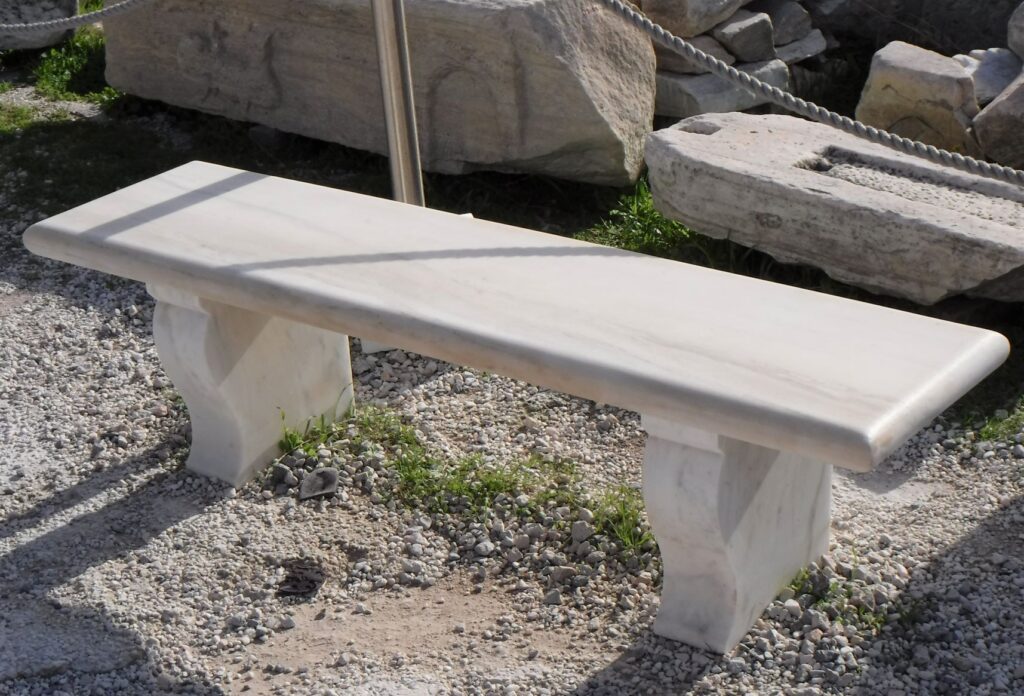
Some are just fragments, whilst others are complete and well preserved.
Oh hang on that’s a bench for visitors…
The other striking building found on the Acropolis is the Erechtheion. It has a very different appearance to most ancient Greek buildings, looking more like a collection of structures all stuck together.

The Erechtheion is built on the site where Athena and Poseidon campaigned against one another to be the patron of the city of Athens, then known as Cecrops. Now it’s not every day that you get to watch two Gods go head to head to decide the patronage of your town, so needless to say a goodly crowd of Cecropians turned up to watch.
Poseidon must have won the coin toss as he went first, presenting his offering to the people. Striking the ground with his trident, the God of the Sea, Rivers, Earthquakes and for some reason Horses, brought forth a salt water spring. Now bringing forth a spring of any form is a neat trick no doubt about it, but the crowd was underwhelmed as since the water was salty is was bugger all use for anything. I mean, if your city borders the Aegean you’ve got more salt water than you know what to do with already. Then it was Athena’s turn, and when she planted a seed from which instantly sprang an olive tree, it was a done deal.
The place where Poseidon struck the earth with his trident is located within the Erechtheion, however the olive tree which stands beside the building is not Athena’s; it was planted in memory of her tree in the early 1900s.
One of the most famous parts of the Erechtheion, and the Acropolis as a whole, is the Porch of the Maidens or Caryatids. Rather than the usual columns, the roof of the porch is supported by six statues.
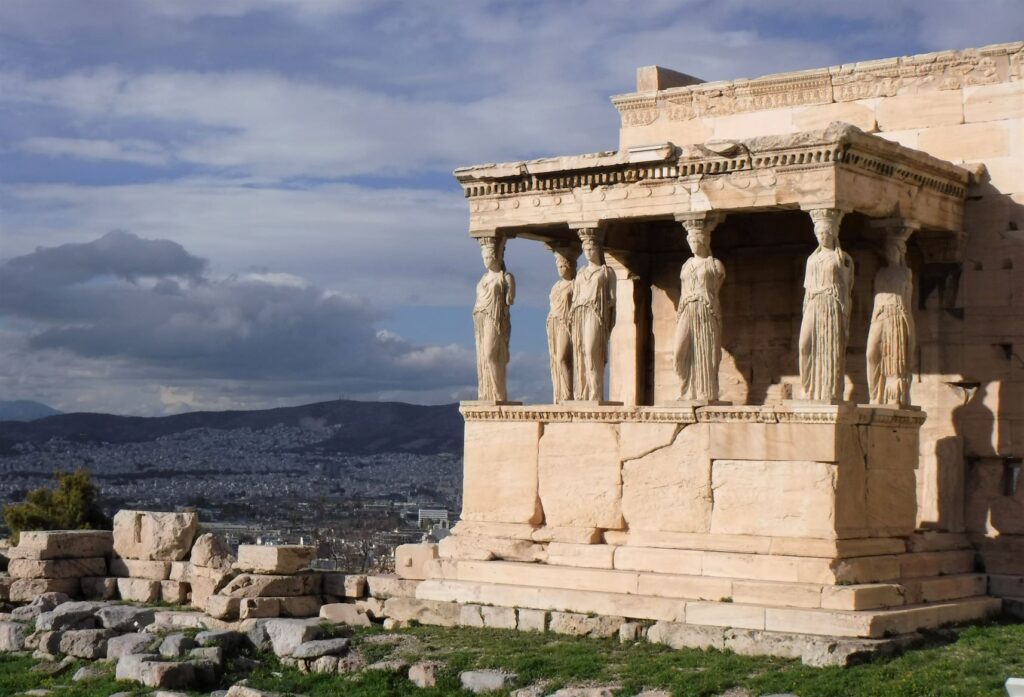
In order to preserve the sculptures, five of the original Caryatids were removed in 1979 and stored in the Acropolis Museum, with replicas installed in their place. The sixth Caryatid, which was pinched ages ago by Thomas Bruce (Great Britain’s Ambassador to Constantinople from 1799-1803; for more on Thomo see Acropolis Museum), is in the British Museum.
I had a great time exploring the Acropolis. It’s one of those amazing places where you keep glancing over your shoulder as you leave, wanting just one more look. My first couple of days in the city had been fascinating, and I still had so much more of ancient Athens to explore.
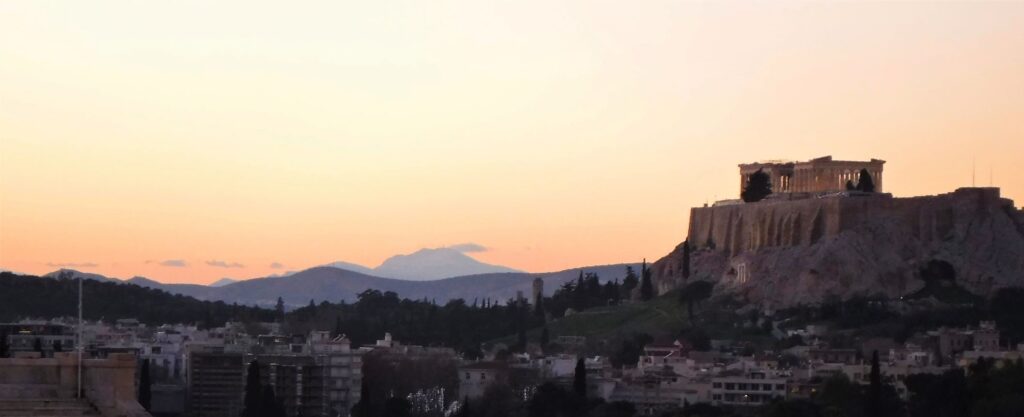
Visit the Acropolis official website here
If you liked this post, you may also enjoy Acropolis Museum, Bull Leaping
Leave a Reply